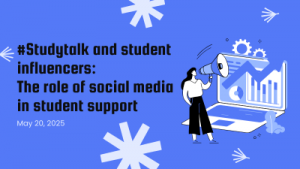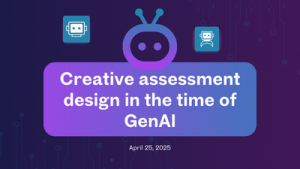Ng Chi Wui
Inspired by Professor Icy Lee, my undergraduate teacher as well as an esteemed scholar in second language writing and language assessment, I wrote an article in 2018 to review and advocate the implementation of assessment for/as learning in Hong Kong English language classrooms (Ng, 2018). More than half a decade has passed since the publication of the aforementioned article, yet English language assessments in Hong Kong are still summative in nature and unconducive to students’ learning.
Summative assessments concur with the concept of assessment of learning (AoL). Pinpointing the product of learning, AoL summarizes students’ performance in terms of numeric scores or letter grades (Berry, 2008). Standardization in summative assessments might give people an impression of fairness, and implementation of such assessments is convenient, especially given an enormous number of students. However, hardly can the results of summative assessments facilitate future learning, for students know little about their own performance merely by looking at their scores or grades.
In contrast, formative assessments are aligned with concepts of assessment for learning (AfL) and assessment as learning (AaL). Emphasizing the process of learning, AfL assists students in constructing knowledge and discovering their own strengths and weaknesses whilst AaL stresses learner autonomy in the course of assessment (Berry, 2008). Concrete practices of formative assessments, including AfL and AaL, include provision of specific achievement targets, provision of detailed descriptive feedback, alignment of instruction with assessment results, and self-assessment (Ng, 2018). Even though formative assessments are profitable for future learning, their administration is extremely time-consuming. It takes a considerable amount of time for teachers to produce quality feedback and construct assessment rubrics with specific descriptions of assessment requirements. Confronting with a heavy workload brought by the “reform syndrome” (Cheng, 2009), teachers in Hong Kong may prefer summative assessments to formative assessments despite their awareness of the benefits of the latter.
One specific issue concerning provision of feedback in formative assessments is the optimal scope of written corrective feedback (WCF) to be provided on second language writing assessments. WCF, which denotes “responses to linguistic errors in learners’ written work” (Mao & Lee, 2020), can vary in terms of the extent to which errors are responded to (Ferris, 2011). Comprehensive WCF entails “comprehensive correction of every error in students’ writing” (Van Beuningen et al., 2012, p.5) whereas focused WCF refers to feedback on “specific error types pre-selected by the teacher and/or errors based on individual student needs” (Lee, 2020, p.4). Focused WCF is argued to be more desirable than comprehensive WCF by avoiding teachers’ unpleasant marking experience, reducing students’ cognitive load, providing more room for feedback on other macro aspects of discourse like content and organisation, and more importantly facilitating AfL (e.g. Bitchener & Ferris, 2012; Ferris & Hedgcock, 2023). That said, the latter is still more prevalent in second language classrooms (Furneaux et al., 2007); one reason is that teachers are worried that their failure to identify all grammatical errors made by students would be linked to school leaders’, students’, and parents’ perception of their laziness (Lee, 2019).
To better promote formative assessments and focused WCF, the following suggestions are put forward. In accordance with the intended curriculum published by the Hong Kong government, formative assessments ought to receive more attention and constitute an integral component of classroom teaching (Curriculum Development Council, 2017, pp.84-85). The key is how to put such a goal into practice without exerting extra burden on teachers. It is suggested to reduce the amount of assessment in return of more quality assessments and feedback. It is high time we rid the “the more, the better” mindset. Given that fewer assessments are conducted, teachers will have more time to provide students with more detailed feedback on each assessment. Similarly, given that a smaller amount yet more focused feedback is provided, students will have more room to digest each piece of feedback given by teachers. In such a vein, students may learn more than taking multiple assessments with unfocused or superficial feedback. It is also recommended to set more reasonable appraisal guidelines so that teachers who deliberately ignore certain grammatical errors made by students in their assignments will no longer be evaluated as “inferior” or “unsatisfactory”.
In fact, empowering teachers to design formative assessments for their students autonomously is also beneficial for teachers’ professional development. To conduct efficacious formative assessments, teachers should enhance their assessment literacy, which, at the basic level, involves the ability to distinguish between high-quality and low-quality assessments (Stiggins, 1991). This can be done with the use of Su and Lee’s (2024) blended assessment literacy scale, which enables second language educators to conduct self-assessment of and devise plans to heighten their own assessment literacy in the increasingly common blended learning setting.
References
Berry, R. (2008). Assessment for learning. Hong Kong: Hong Kong University Press.
Bitchener, J., & Ferris, D. R. (2012). Written corrective feedback in second language acquisition and writing. London: Routledge.
Cheng, Y. C. (2009). Hong Kong educational reforms in the last decade: reform syndrome and new developments. International Journal of Educational Management, 23 (1), 65-86. http://www.emeraldinsight.com/doi/pdfplus/10.1108/09513540910926439
Curriculum Development Council. (2017). English Language Education Key Learning Area Curriculum Guide (Primary 1 – Secondary 6). https://www.edb.gov.hk/attachment/en/curriculum-development/kla/eng-edu/Curriculum%20Document/ELE%20KLACG_2017.pdf
Ferris, D. (2011). Treatment of error in second language student writing (2nd ed.). University of Michigan Press.
Ferris, D. R., & Hedgcock, J. S. (2023). Teaching L2 composition: Purpose, process, and practice (4th ed.). London: Routledge.
Furneaux, C., Paran, A., & Fairfax, B. (2007). Teacher stance as reflected in feedback on student writing: An empirical study of secondary school teachers in five countries. International Review of Applied Linguistics in Language Teaching, 45 (1), 49-94. https://www.degruyter.com/document/doi/10.1515/IRAL.2007.003/html
Lee, I. (2019). Teachers’ frequently asked questions about focused written corrective feedback. TESOL Journal, 10 (3), e00427. https://onlinelibrary.wiley.com/doi/abs/10.1002/tesj.427
Lee, I. (2020). Utility of focused/comprehensive written corrective feedback research for authentic L2 writing classrooms. Journal of Second Language Writing, 49, 100734. https://www.sciencedirect.com/science/article/abs/pii/S1060374320300254
Mao, Z., & Lee, I. (2020). Feedback scope in written corrective feedback: Analysis of empirical research in L2 contexts. Assessing Writing, 45, 100469. https://www.sciencedirect.com/science/article/abs/pii/S1075293520300301
Ng, C. W. (2018). Assessment for/as Learning in Hong Kong English language classrooms: A review. International Journal of Research in English Education, 3 (3), 1-12. http://ijreeonline.com/article-1-104-en.html
Stiggins, R. J. (1991). Assessment literacy. Phi Delta Kappan, 72 (7), 534-539. http://eric.ed.gov/?id=EJ422814
Su, X., & Lee, I. (2024). Is the magic in the mix? The development and validation of the L2 teachers’ blended assessment literacy scale. System, 123, 103354. https://www.sciencedirect.com/science/article/abs/pii/S0346251X24001362?via%3Dihub
Van Beuningen, C. G., De Jong, N. H., & Kuiken, F. (2012). Evidence on the effectiveness of comprehensive error correction in second language writing. Language learning, 62 (1), 1-41. https://onlinelibrary.wiley.com/doi/abs/10.1111/j.1467-9922.2011.00674.x



